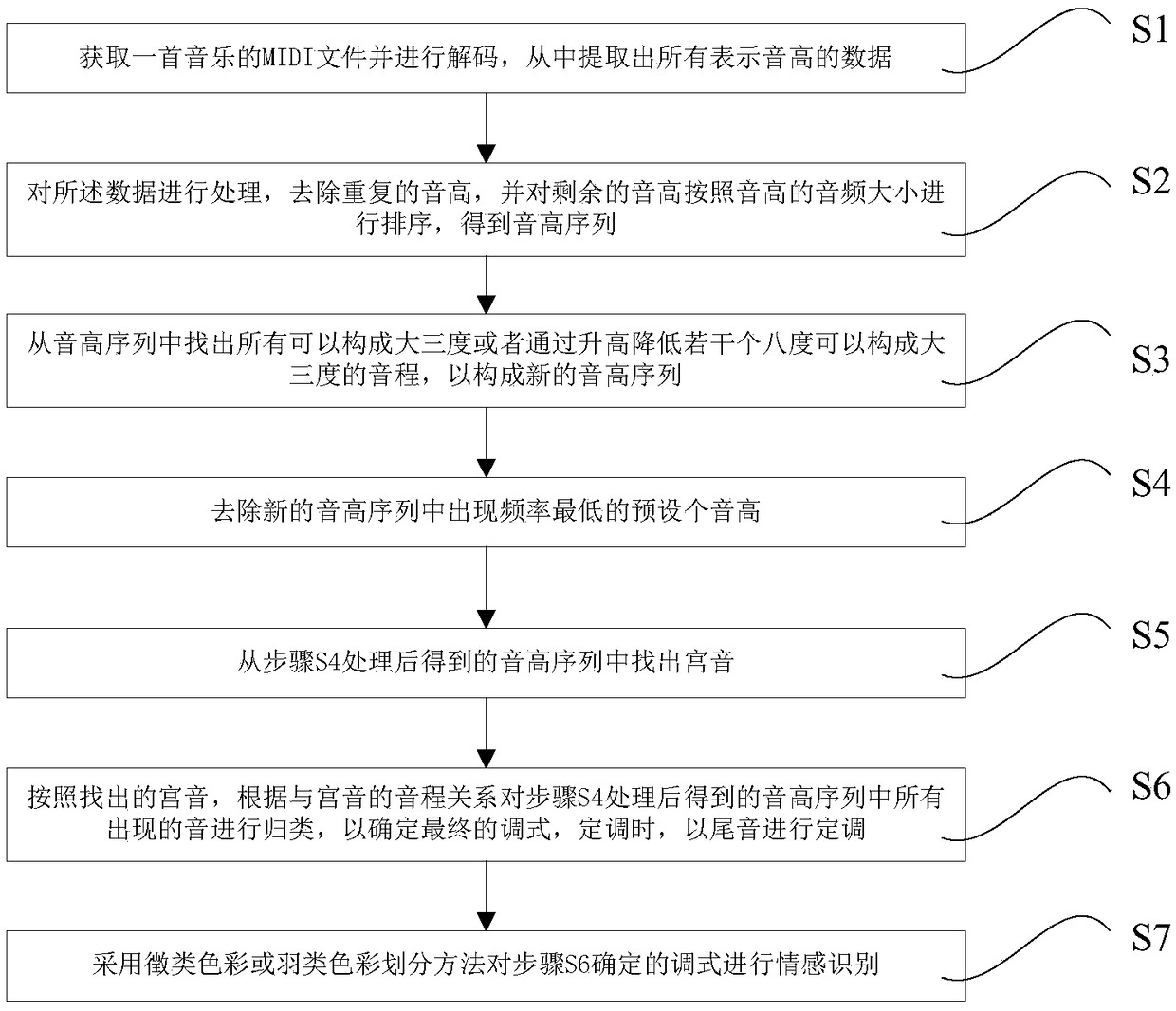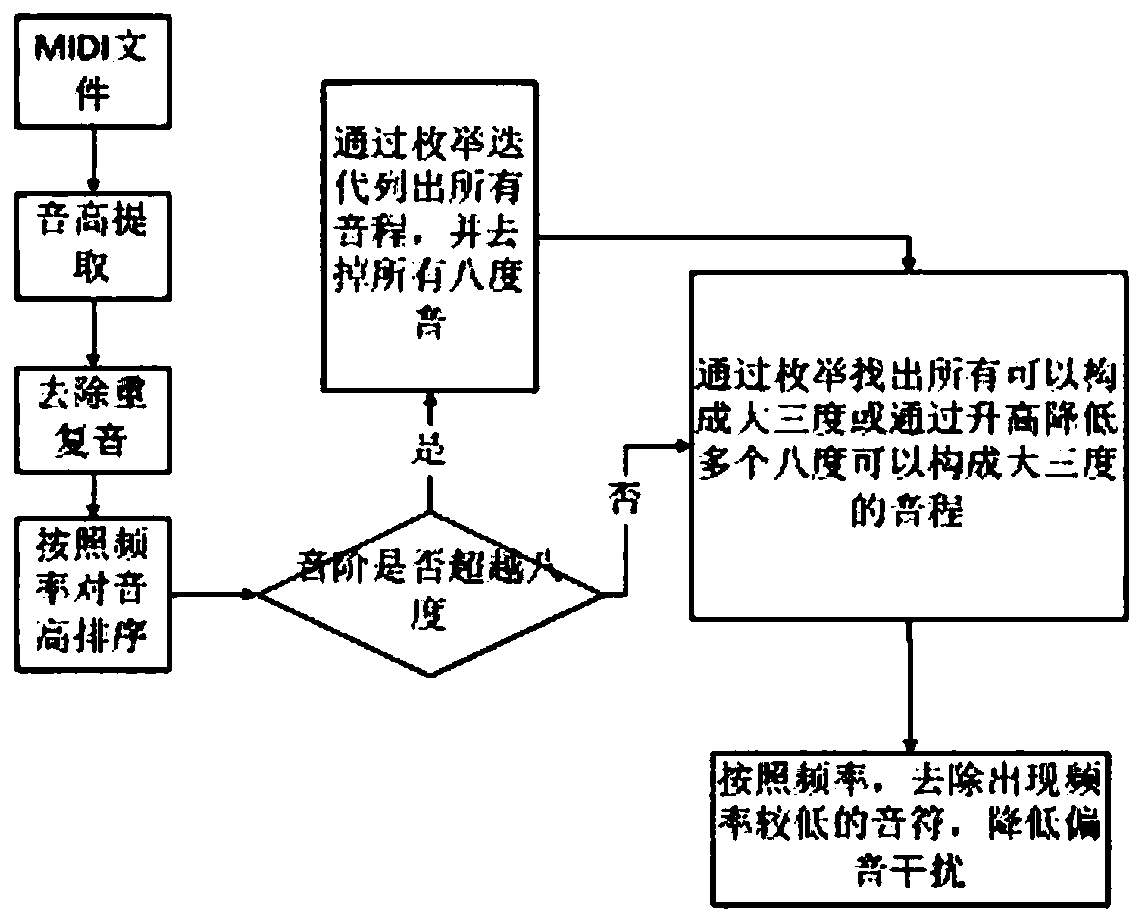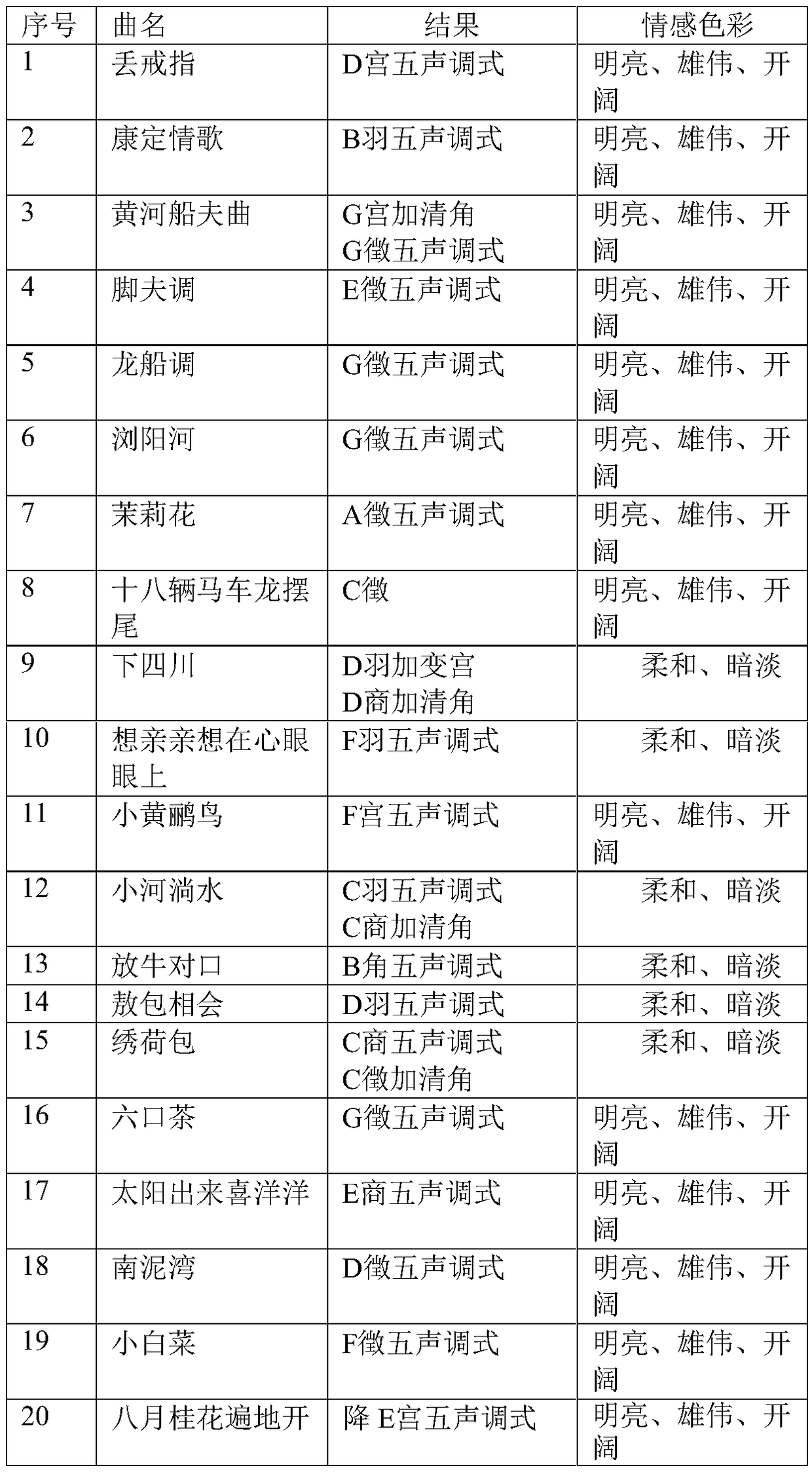Chinese national pentatonic emotion recognition method and system
A technology of emotion recognition and tone, applied in the field of emotion recognition, can solve problems such as dependence
- Summary
- Abstract
- Description
- Claims
- Application Information
AI Technical Summary
Problems solved by technology
Method used
Image
Examples
Embodiment Construction
[0037] In order to have a clearer understanding of the technical features, purposes and effects of the present invention, the specific implementation manners of the present invention will now be described in detail with reference to the accompanying drawings.
[0038] refer to figure 1 , which is a flowchart of an embodiment of the Chinese national pentatonic emotion recognition method of the present invention. The Chinese national pentatonic emotion recognition method of this implementation comprises the following steps:
[0039] S1. Obtain and decode the MIDI file of a piece of music, and extract all the data representing the pitch therefrom;
[0040] S2. Process the data, remove repeated pitches, and sort the remaining pitches according to the audio size of the pitches to obtain a pitch sequence;
[0041] S3, find out all intervals that can form a major third or lower several octaves to form a new pitch sequence from the pitch sequence;
[0042] S4. Remove the preset pit...
PUM
 Login to View More
Login to View More Abstract
Description
Claims
Application Information
 Login to View More
Login to View More - R&D
- Intellectual Property
- Life Sciences
- Materials
- Tech Scout
- Unparalleled Data Quality
- Higher Quality Content
- 60% Fewer Hallucinations
Browse by: Latest US Patents, China's latest patents, Technical Efficacy Thesaurus, Application Domain, Technology Topic, Popular Technical Reports.
© 2025 PatSnap. All rights reserved.Legal|Privacy policy|Modern Slavery Act Transparency Statement|Sitemap|About US| Contact US: help@patsnap.com



